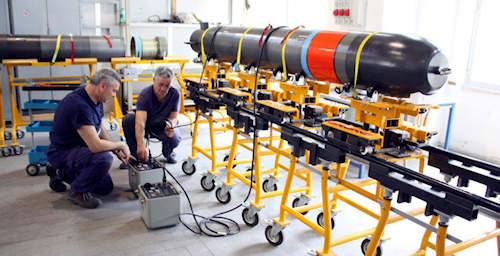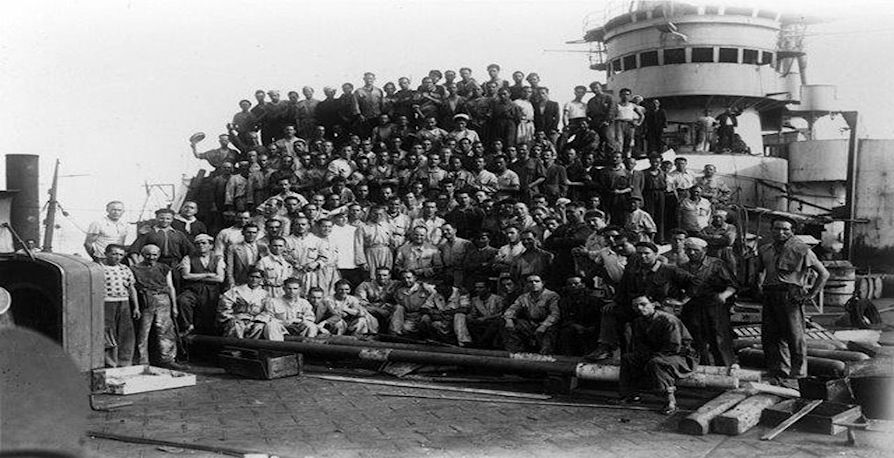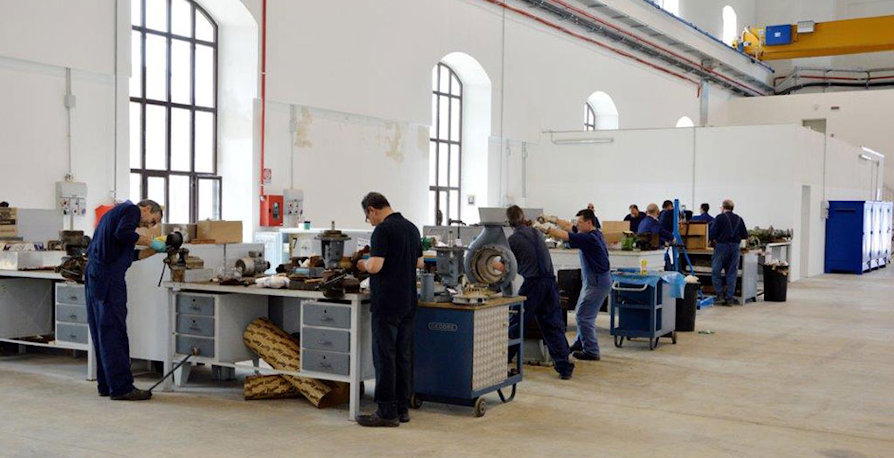The Maritime Military Arsenal of Taranto was inaugurated, in the presence of King Umberto I of Savoy, on August 21, 1889, to remedy the ever growing need for defense of Italy reaching out to the Mediterranean Sea. The construction works, which also included the enlargement of the navigable canal to connect the Mar Piccolo with the Mar Grande, began in September 1883 and lasted about six years.
The Arsenale extends over an area of over 90 hectares of which 70 are uncovered, bounded by a surrounding wall 7 meters high and 3250 meters long, with a seafront of about 3 km, from which 4,5 km of docks on the southern shore of the Mar Piccolo. The territory is organized into four areas: the central area where the general management is located, the combat systems area to the west and the platform and services area to the east.
It features two floating docks that can accommodate units up to 6000 tons, and two masonry docks: the Benedetto Brin built in 1889 and the Edgardo Ferrati built in 1916, among the largest in Europe.
 The construction of warships began in 1894 and for the following seventy years there were many naval units launched on the ports of the Taranto plant, until 1967, the year in which the Navy decided to abandon the new buildings and allocate the Arsenal to support and maintain the fleet in efficiency.
The construction of warships began in 1894 and for the following seventy years there were many naval units launched on the ports of the Taranto plant, until 1967, the year in which the Navy decided to abandon the new buildings and allocate the Arsenal to support and maintain the fleet in efficiency.
Today, the Military Maritime Arsenal of Taranto, with its 1.500 employees (of which 1350 civilians), is the first defense work site and the second industrial reality in Taranto, after Alcelor Mittal. The plant ensures the maintenance of about 70% of the first line units of the Navy and the intense operational activity recently carried out by the Naval Squad has led to a strong increase in the maintenance requirement and, therefore, in the capacity of the Taranto plant.
The specific features of the functions of the Maritime Military Arsenal of Taranto, linked to the peculiarities of military naval units, represent a heritage to be preserved and invested in, as a fundamental element to ensure the tasks that the Navy is institutionally called upon to perform.
Over time, the arsenal has been able to adapt its capabilities to the technological progress of systems and equipment mounted on board, with the adaptation of the workshops and the training of personnel in line with the operational needs of the ships of the military fleet.

As part of the interventions envisaged by Law no. 20 of 4 March 2015, containing urgent provisions for the exercise of companies of national strategic interest in crisis and for the development of the city and of the Taranto area, a "Project for the cultural and tourist enhancement of the Maritime Military Arsenal of Taranto, without prejudice to the priority destination of the complex as the arsenal and the priority operational and logistical needs of the Navy".
Specifically, the project, aimed at opening the Arsenale to the community for tourist-cultural purposes related to the culture of the sea, is divided into six interventions, the first of which is the construction of a entry point, near the direction of the Arsenale (area of automotive work machinery maintenance department), to be used as a reception point and with exhibition spaces and for merchandising activities.
This is followed by the strengthening of the exhibitions of the already existing historical-artisan exhibition, with the expansion of the adjacent exhibition area room to plot. Other points of the project are the redevelopment of the "ex-lance rowing", "small engines" and "furnaces and blacksmiths" workshops (inside which a submarine of the class Sauro).

The last intervention of the project is the preparation and enhancement of the visit routes, which includes restoration of the facades of the buildings involved in the route, restoration of the road network and activation of an electric shuttle service.
The total cost of the Project, based on the feasibility studies and the preliminary inspections carried out, is estimated at about 35 million euros, including design costs and to be developed according to a multi-year program over four years, starting from the signing of the protocol. agreement between the Ministry of Defense and the Ministry for Cultural Heritage and Activities.
Currently, 5,7 million euros have been allocated, as per the CIPE resolution of 22 December 2017, published in the Official Gazette of 6 April 2018, intended as follows: 4,3 million euros for the design and construction of theentry point, 1,4 million euros for the development of the design of the other 5 interventions envisaged by the project.
The museum destination of the no longer used areas of the plant translates into an added value in terms of enhancement and proximity between the city of Taranto and its Arsenal, for which the operational and logistical needs of the Navy remain a priority.


















